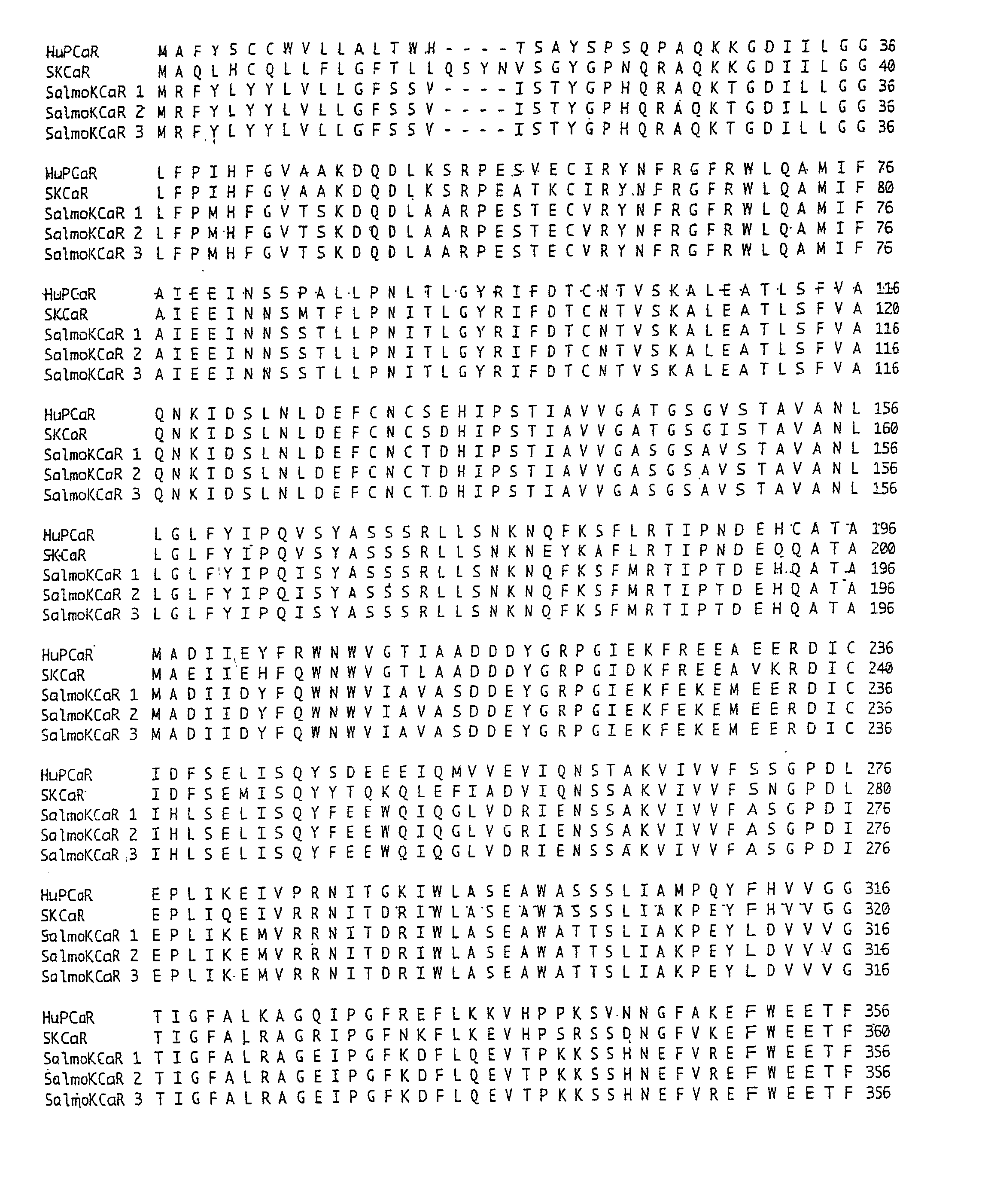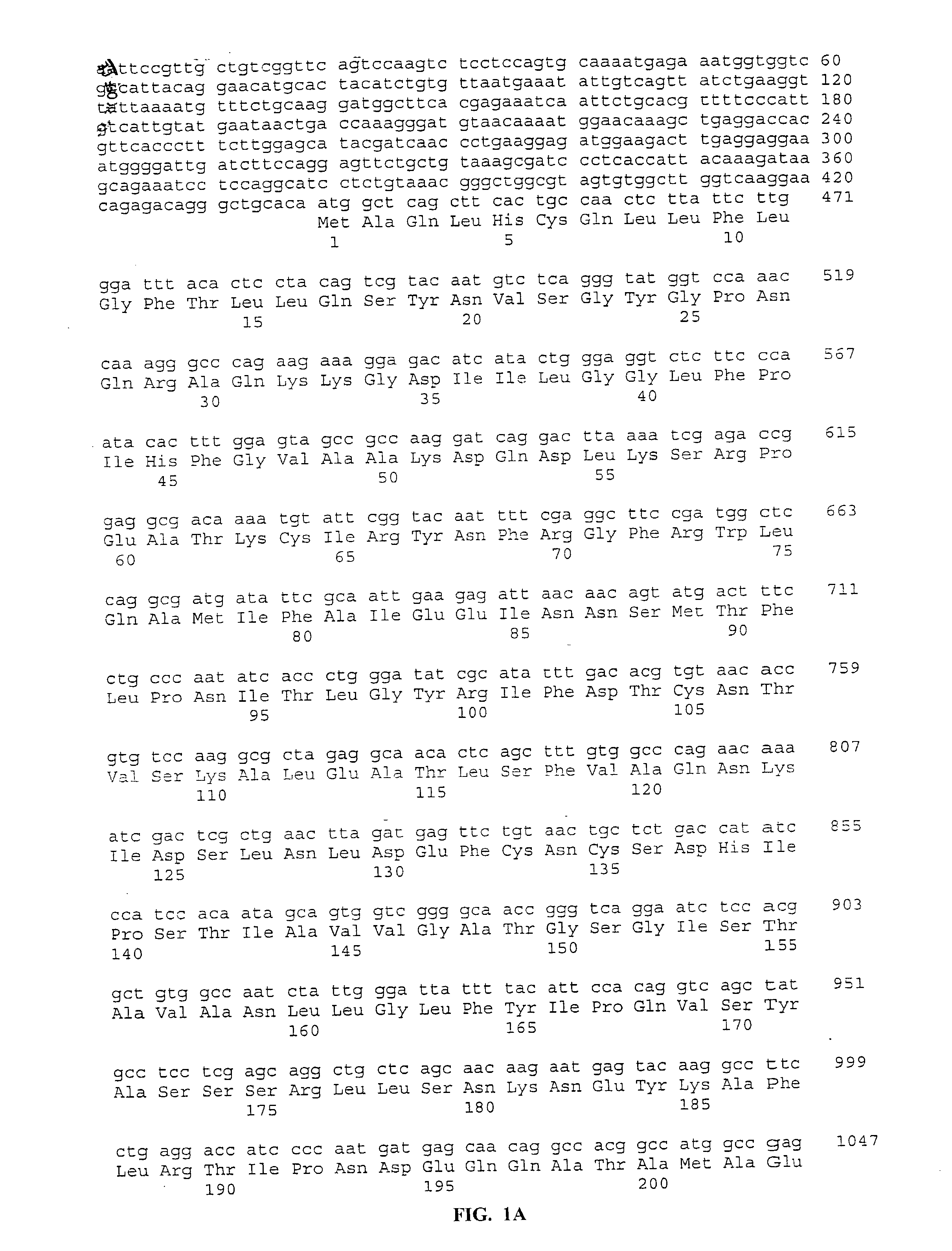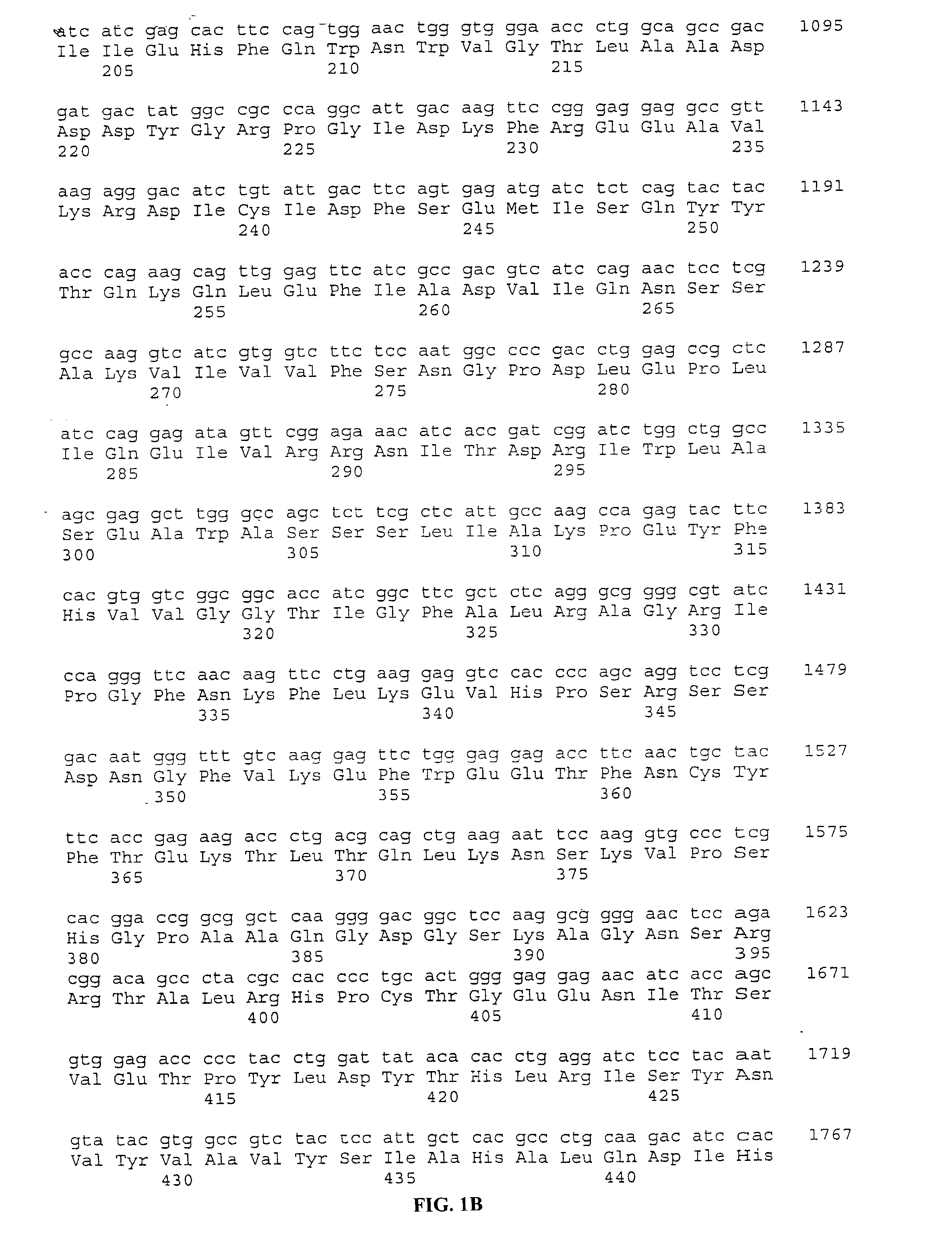Polyvalent cation-sensing receptor in atlantic salmon
a technology of atlantic salmon and polyvalent cations, which is applied in the direction of peptide sources, peptide/protein ingredients, peptides, etc., can solve the problems of difficult to pinpoint, fish hatcheries have experienced some difficulty in raising salmon, and lack of fundamental understanding
- Summary
- Abstract
- Description
- Claims
- Application Information
AI Technical Summary
Benefits of technology
Problems solved by technology
Method used
Image
Examples
example 9
Immunolocalization Of Polyvalent Cation Receptor (PVCR) In Mucous Cells Of Epidermis Of Salmon
[0317] The skin surface of sahnonids is extremely important as a barrier to prevent water gain or loss depending whether the fish is located in fresh or seawater. Thus, the presence of PVCR proteins in selected cells of the fish's epidermal layer would be able to "sense" the salinity of the surrounding water as it flowed past and provide for the opportunity for continuous remodeling of the salmonid's skin based on the composition of the water where it is located.
[0318] Methods: Samples of the skin from juvenile Atlantic Salmon resident in seawater for over 12 days were fixed in 3% paraformaldehyde dissolved in buffer (0.1 M NaPO4, 0.15M NaCl, 0.3M sucrose pH 7.4), manually descaled, rinsed in buffer and frozen at -80.degree. C. for cryosectioning. Ten micron sections were either utilized for immunolocalization of PVCR using anti-shark PVCR antiserum or stained directly with 1% Alcian Blue d...
example 10
Demonstration Of The Use Of Solid Phase Enzyme-Linked Assay For Detection Of PVCRS In Various Tissues Of Individual Atlantic Salmon Using Anti-PVCR Polyclonal Antiserum
[0321] The PVCR content of various tissues of fish can be quantified using an ELISA 96 well plate assay system. The data, described herein, demonstrate the utility of a 96 well ELISA assay to quantify the tissue content of PVCR protein using a rabbit polyclonal anti-PVCR antibody utilized to perform immunocytochemistry and western blotting. These data form the basis for development of commercial assay kits that would monitor the expression levels of PVCR proteins in various tissues of juvenile anadromous fish undergoing the processes of the present invention, as described herein. The sensitivity of this ELISA is demonstrated by measurement of the relative PVCR content of 14 tissues from a single juvenile Atlantic salmon, as shown in FIG. 33.
Description Of Experimental Protocol
[0322] Homogenates were prepared by placin...
example 11
Antibodies Made From The Carboxyl Terminal Portion Of An Atlantic Salmon PVCR Protein Are Effective In Immunocytochemistry And Immunoblotting Assays To Determine The Presence, Absence Or Amount Of The PVCR Protein
[0324] Degenerate primers, dSK-F3 (SEQ ID NO: 13) and dSK-R4 (SEQ ID NO: 14), described herein were constructed specifically from the SKCaR DNA sequence. These primers have proved to be useful reagents for amplification of portions of PVCR sequences from both genomic DNA as well as cDNA.
[0325] To obtain more cDNA sequence from anadromous fish PVCRs, in particular the putative amino acid sequence of the carboxyl terminal domain of PVCRs that are targets for generation of specific peptides and, as a result, specific anti-Atlantic Salmon PVCR antisera, an unamplified cDNA library from Atlantic salmon intestine was constructed. Phage plaques originating from this cDNA library were screened under high stringency using .sup.32P-labeled 653 bp genomic Atlantic Salmon PCR product. ...
PUM
| Property | Measurement | Unit |
|---|---|---|
| Fraction | aaaaa | aaaaa |
| Fraction | aaaaa | aaaaa |
| Water absorption | aaaaa | aaaaa |
Abstract
Description
Claims
Application Information
 Login to View More
Login to View More - R&D
- Intellectual Property
- Life Sciences
- Materials
- Tech Scout
- Unparalleled Data Quality
- Higher Quality Content
- 60% Fewer Hallucinations
Browse by: Latest US Patents, China's latest patents, Technical Efficacy Thesaurus, Application Domain, Technology Topic, Popular Technical Reports.
© 2025 PatSnap. All rights reserved.Legal|Privacy policy|Modern Slavery Act Transparency Statement|Sitemap|About US| Contact US: help@patsnap.com



